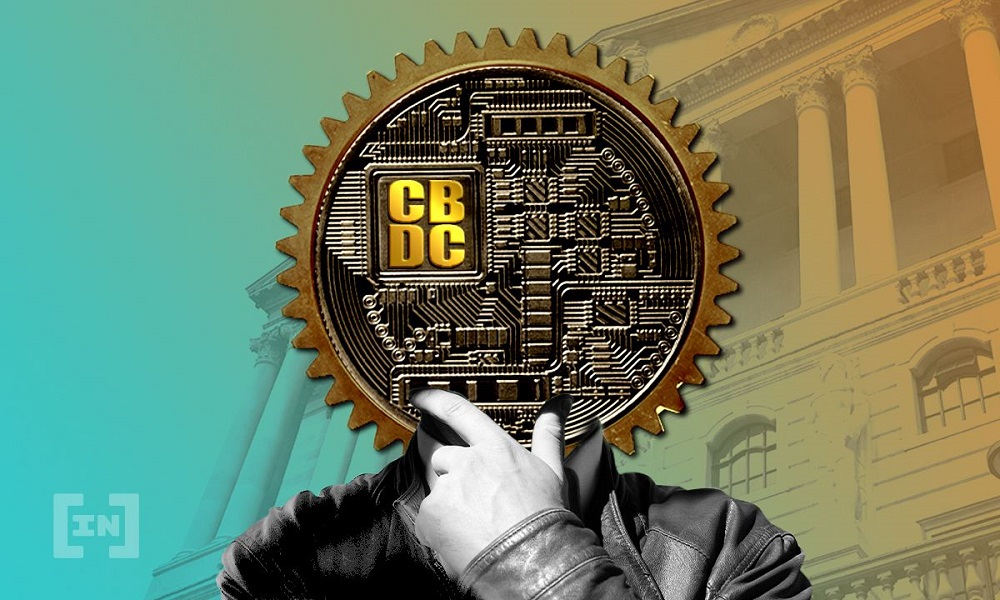
The Ascent Of CBDCS

Money and payment methods have undergone ongoing change throughout human history. Avatars of money and payment systems have ranged from a straightforward barter system to precious metals-based trading, ruler-issued imprinted coins, central bank-issued promissory notes, and more. We have now transitioned from the era of cash to that of cryptocurrency.
What is CDBC

Colin Lambert /Wikipedia | Around 100 countries are exploring CBDCs at one level or another
A central bank digital currency (CBDC) is a digital currency issued by a central bank rather than a commercial bank. It is also known as digital fiat currency or digital base money. Like real banknotes and coins, it is a liability of the central bank and is valued in the national currency.
CBDC isn’t a brand-new kind of money; rather, it’s a type of central bank electronic cash that individuals and organisations may use to make payments. Although the term “central bank digital currency” is not fully defined, according to research by the Bank for International Settlements, “it is envisioned by most to be a new kind of central bank money, that is different from balances in traditional reserve or settlement accounts,”.
The current idea of CBDCs may have drawn some inspiration from Bitcoin and other blockchain-based cryptocurrencies, but they differ in that a CBDC is or would be issued by a state. A distributed ledger like a blockchain won’t likely be used or required in most CBDC implementations.

Rachael King/ Twitter | While some may assume that CBDCs are a new concept, they have in fact been around for three decades
Most central banks worldwide are now evaluating whether to introduce their own national digital currencies at various levels. Christine Lagarde, the head of the ECB, claims that more than 80 central banks are considering using digital currencies. The RMB in China was the first digital money to be issued by a significant economy. Four central banks, the Central Bank of The Bahamas (Sand Dollar), the Eastern Caribbean Central Bank (DCash), the Central Bank of Nigeria (e-Naira), and the Bank of Jamaica, have introduced CBDCs as of January 2023. (JamDex).
Some nations, such as Venezuela (Petro) and the Marshall Islands (Sovereign), have also released cryptocurrencies or have thought about doing so. These digital currencies are frequently considered to boost a state’s independence from international financial institutions by lowering reliance on a foreign currency or dodging sanctions, for example.
Pros and cons

Stewart Fleming/ Getty Images | The introduction and evolution of cryptocurrency and blockchain technology have created further interest in cashless societies and digital currencies
Leading experts contend that CBDCs can boost the robustness of domestic payment systems and generate more competition in addition to increasing financial inclusion, resulting in better access to money, improved payment efficiency, and decreased transaction costs. Additionally, CBDCs can increase financial flow transparency and possibly lessen currency substitution (when a country uses a foreign currency in addition to its own).
While a CBDC may appear to have many advantages on paper, central banks must first decide whether there is a strong basis for adopting them, particularly whether there will be enough demand. Some have concluded that there isn’t, at least not yet, while many others debate this issue.
Additionally, central banks must consider the risks associated with issuing CBDCs. Users can take too much cash out of their accounts at once to buy CBDCs, which could lead to a crisis. The ability of central banks to manage the dangers brought on by cyberattacks while preserving data privacy and financial integrity will need to be considered.
More in Business & Finance
-
`
Curious About Travis Kelce’s Net Worth? Here’s the Scoop!
Travis Kelce’s name echoes through NFL stadiums, synonymous with athletic prowess and electrifying plays. But beyond his touchdown celebrations and record-breaking...
June 10, 2024 -
`
Everything You Need to Know About an Assumable Mortgage
What is an Assumable Mortgage? Whether you are a buyer or a seller, understanding the concept of assumable mortgages can open...
June 6, 2024 -
`
Layoff vs. Fired – Understanding the Crucial Differences
When it comes to job loss, understanding the distinction between being layoff vs. fired is crucial. While both situations result in...
May 30, 2024 -
`
When Are Business Taxes Due 2024? Essential Dates and Deadlines
Tax deadlines can be daunting, but fear not! Let’s break down everything you need to know to stay on top of...
May 22, 2024 -
`
How Much Does Jeff Bezos Make Per Hour? It’s More Than You Think!
Jeff Bezos, a name synonymous with innovation and wealth, stands as one of the world’s richest individuals. While Bernard Arnault and...
May 16, 2024 -
`
What is Portfolio Investment Entity (PIE) and How Can it Benefit You?
In the intricate world of finance, individuals seek avenues to optimize their investments while minimizing risks. One such avenue gaining traction...
May 9, 2024 -
`
What is a Bank Statement? Understanding its Definitions, Benefits, and Prerequisites
Ever wondered where your money goes? A bank statement is like a financial report card, giving you a clear picture of...
April 30, 2024 -
`
Branded Content: A Genuine Way to Connect With Your Audience
Have you ever binge-watched a series on Netflix, only to later realize that the beverage everyone’s sipping on is that brand...
April 23, 2024 -
`
What Car Does Jeff Bezos Drive? Find Out Inside His Exclusive $20 Million Collection
Have you ever wondered what car does Jeff Bezos drive? This man’s tastes in vehicles are as expansive as his business...
April 17, 2024















You must be logged in to post a comment Login